
|
Celebrating 200 Years 1816-2016 |
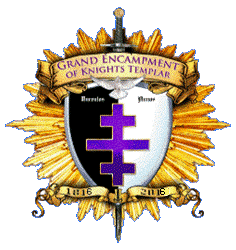
Founders of the Grand Encampment, circa 1816
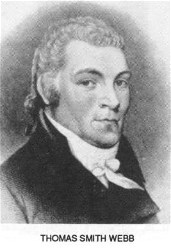    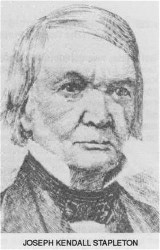 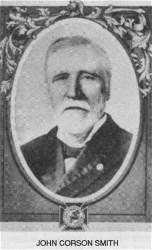
In the activities of the Grand Encampment, many Sir Knights gladly performed the duties assigned to them with fidelity and zeal. To some came recognition when they were elevated to the office of Grand Master, and these have been noted in the previous chapter. But there were others who also served. Though their names are not so well known, they too had great love for the Order and the same pride in its advancement.
At the organization of the Grand Encampment in 1816, we find four Sir Knights-Thomas S. Webb, Henry Fowle, John Snow, and Thomas Lowndes. It was their earnest aim and great desire to see a Supreme Governing Body established to unite and cement in friendly bonds all the Sir Knights of the United States. They gave freely of their time and talents to get the new organization started, yet not one ever served as its Grand Master. Sir Thomas S. Webb, who was recognized as the leader in this movement, instead of taking the high office himself, stepped aside that the young organization might have the prestige afforded by placing in the office of Grand Master, one whose name would give it prominence and influence. We now pay tribute to these four, and give a brief story of their lives, that proper recognition and respect may be given their great service to the Order.
Others also served as the Order grew with the years. Sir Joseph K. Stapleton, long the Deputy General Grand Master, was active during the early years of expansion. Sir John Corson Smith was helpful in establishing friendly relations with the foreign Grand Jurisdictions, leading to the Treaty of Amity which bound together all English-speaking Knights Templar. Sir Enoch T. Carson, an earnest student of Masonic history, ritual, law and philosophy, had much to do with the development of the rituals of the Orders of Knighthood adopted by the Grand Encampment.
Recognition is also given to the Grand Recorders, whose faithful and valuable services have meant so much to the Order. Among those who gave long and diligent service were Sir Knight Charles Gilman, Theodore S. Parvin and Adrian Hamersly.

Thomas S. Webb was born in Boston on October 30, 1771. He received his early education in the public schools, and at sixteen was apprenticed to a printer. Some years later he moved to Keene, New Hampshire, where he engaged in his trade. While there he married Miss Marthy Hopkins. In 1792 he moved to Albany, New York, where he opened a book store, and in 1799 he moved to Providence, Rhode Island, and built up an extensive business in the manufacture of wall paper.
He was greatly interested in music, and while living in Providence he organized the Psallonian Society and was its first President. When he moved to Boston he joined the Philharmonic Society and in 1815 organized the Handel and Hayden Society.
In 1816 Webb began his visits to the Western states. He was making plans to move his manufacturing business to the West, and had finally selected Worthington, Ohio, as the location. In August 1818, he made a trip to Boston, and on his return journey in 1819 he suffered a stroke of apoplexy, while in Cleveland, Ohio, and died on July 6th. He was buried there, but his remains were later returned to Providence, Rhode Island. Funeral services were held under the auspices of the Grand Lodge of Rhode Island on November 8, 1819. In 1862, through the efforts of Sir Knight Robert Morris, an imposing marble monument was erected over his grave.
Sir Knight Webb was Raised in Rising Sun Lodge at Keane, New Hampshire, in December 1790, and on March 7, 1792, he affiliated with Temple Lodge No. 14 at Albany, New York. When he moved to Providence, Rhode Island, in 1799 he affiliated with St. John's Lodge there. In 1801 he attended the meeting of the Grand Lodge of Rhode Island held on June 24th, and was appointed on the Committee to revise the Constitution. In June 1802, he was elected Grand Junior Warden, and in 1813 became Grand Master. He received the Royal Arch Degree in Harmony Chapter at Philadelphia on May 18, 1796, but it is not recorded where he received the other Capitular Degrees. He is credited with the establishment of Temple Chapter at Albany. While acting as its High Priest, he attended St. Andrew's Chapter in Boston in 1797 and illustrated the beginnings of his system of Royal Arch Masonry. When he moved to Providence, he was invited to become a member of Providence Chapter. At the meeting of this Chapter on October 11, 1799, he acted as Scribe. On February 11, 1801, he was elected High Priest to fill the unexpired term of Companion Clarke, and in November of that year was reelected. The Grand Royal Arch Chapter of Rhode Island was organized in March 1798. On December 24, 1799, Webb attended this body and presided as Grand High Priest. On March 10, 1802, he was elected Deputy Grand High Priest and on March 15, 1803, was chosen Grand High Priest, which office he held until 1815.
The formation of a General Grand Chapter of Royal Arch Masons early engaged Webb's attention. At the Convention held in Boston on October 24, 1797, he presided as Chairman, and at the second convention held in Hartford, Connecticut, on January 24, 1798, he was elected General Grand Scribe. In 1806 he was elected General Grand King and in 1816 was chosen as Deputy General Grand High Priest, which office he held until his death in 1819. At the meeting in 1816, DeWitt Clinton was elected General Grand High Priest.
When and where Webb received the Orders of Knighthood cannot now be determined with certainty. Creigh (29) in his "History of Knights Templar of Pennsylvania" claims he was Knighted in Philadelphia. Sir Knight Gardner claims he was Knighted in Boston, while others are equally positive he received the Orders in New York in 1797. However, the foundation of his career as a Knight Templar began in Providence, Rhode Island, where he was present at the organization of St. John's Encampment on August 23, 1802, and became its first Eminent Commander. He continued in that office until 1814 when he declined reelection, as he was making plans to move from the State.
On May 6, 1805, he was the leader in organizing the Grand Encampment of Rhode Island and was chosen the Grand Master. At each annual meeting he was reelected Grand Master until June 1817, when he was succeeded by his friend Sir William Wilkinson.
He was one of the delegates to the convention in Philadelphia and later in New York when the General Grand Encampment of the United States was organized on June 22, 1816. He became the Deputy General Grand Master and held that office until his death.
In September 1797, while living in Albany, New York, he published the first edition of his "Freemason's Monitor or Illustrations of Masonry." This monitor had a wide circulation among the Masons of the New England States. Enlarged and improved editions were printed in 180205-08-12-16 and 1818.
Webb's activity in Royal Arch Masonry did much to establish the Chapter as an independent organization, and his influence in the organization of the General Grand Chapter has been noted. He revised and enlarged the existing rituals of the Mark Master, Past Master and Royal Arch Degrees, and largely created the ritual for the Most Excellent Masters Degree.
The American Order of Knight of the Red Cross has often been credited to Webb, but records show that it was conferred long before he had received the Orders of Knighthood. There is no doubt, however, that he modified and elaborated the ritual which formed the basis of our present work. His interest in Templary was not limited to the ritualistic work, but was directed to the organization of state and national governing bodies, which could better control and direct the work of the Great Christian Order of Knighthood. The General Grand Encampment stands as a monument to his memory.
TOP
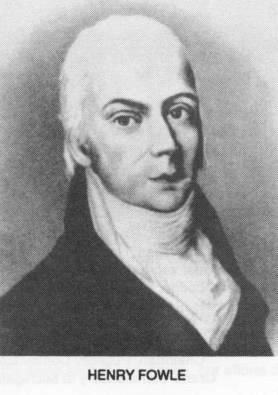
Henry Fowle, one of the early leaders of Templary in Massachusetts, was born at Medford, Massachusetts, on September 19, 1766. His schooling was limited and ended with the beginning of the Revolutionary War. For a time he worked with his father in the tailoring business, but the close confinement did not agree with his health. In 1783 he entered into an apprenticeship with Mr. Richard Skillen of Boston, a block and pump maker. He found this work quite agreeable, and in 1788 was able to purchase tools and set up his own business. After some reverses the business prospered, and in 1815 he took his son, Henry, into partnership.
On November 1, 1789, he married Miss Elizabeth Bently. Thirteen children were born before she died in January 1811. The next year he married Miss Mary Adams, who passed away three years later during the birth of their first child. In January 1815, he married Miss Ruthy Skimmer, and six children were born to that union.
In 1827 he became crippled with rheumatism, which was to incapacitate him during the rest of his life. He finally sold his business to three of his sons; Henry, William and Joshua. They were to make monthly payments to him as long as he lived, but after two years when business became dull, they broke the agreement and sold out the business. This left him without any income. He moved to Jamaica Plains but in 1830 returned to Boston where he remained until his death on March 10, 1937. His later years were very difficult because of his poverty and failing health.
Fowle was made a Mason in St. Andrews Lodge in Boston in 1793. He received the Entered Apprentice Degree on April 11th, the Fellow Craft Degree on June 17th, and the Master Degree on August 2nd. Soon afterwards, he was the Junior Warden and two years later became Senior Warden. In 1800 he was one of the petitioners for Mount Lebanon Lodge and was its first Worshipful Master. The work and lectures used in this new Lodge were revised by Fowle, who felt that many improprieties and errors had crept into the work as it was generally conferred in that vicinity. This work had the approval of the Grand Lodge and Grand Master Isaiah Thomas offered Fowle a salary of one hundred dollars a month if he would teach this work throughout the jurisdiction. A little later he reaffiliated with St. Andrews Lodge and became the Worshipful Master, which office he held for six years. In 1801 he was appointed Junior Grand Deacon of the Grand Lodge of Massachusetts and became Senior Grand Warden in 1809. When Francis J. Oliver was Grand Master in 1817, he served as Deputy Grand Master for the third Masonic District.
On January 28, 1795, Fowle received the Mark, Past, Most Excellent and Royal Arch degrees in St. Andrews Chapter. In 1804 he was elected High Priest and was reelected annually until 1808. He was Deputy Grand High Priest of the Grand Chapter of Massachusetts for eight years and when elected Grand High Priest declined to accept the office. In 1798 he was a delegate with Benjamin Hurd and William Woart to the convention at Hartford, which resulted in the organization of the General Grand Chapter. On June 6, 1816, he represented the Grand Chapter of Massachusetts at the fourth meeting of the General Grand Chapter held in New York. At the next Triennial meeting in 1819 he attended as Deputy Grand High Priest of Massachusetts and was elected Deputy General Grand High Priest of the General Grand Chapter. Due to ill health he was not present at the meeting in 1826.
Fowle received the Knight Templar Degree on January 28, 1795, in St. Andrews Chapter, at the same meeting that he was exalted a Royal Arch Mason. From that time on his zeal for Templary is evidenced by his work in organizing the Masonic Knights of Boston. March 12, 1802, he became the Sovereign Master of the newly organized Council of Knights of the Red Cross. When that body was reorganized as the Boston Encampment of Knights Templar in 1806 he was elected Grand Master (Eminent Commander) which office he held until 1824. When the Grand Encampment of Rhode Island was established in Providence on March 6, 1805, he was chosen Grand Generalissimo. In 1817 he became Deputy Grand Master, and in 1820 Grand Master of the Grand Encampment of Massachusetts and Rhode Island.
In 1816 he was one of the delegates from the Grand Encampment of Massachusetts and Rhode Island to the convention in Philadelphia, and later in New York when the General Grand Encampment was organized. He was elected General Grand Generalissimo. At the second meeting of the General Grand Encampment in 1819 he took Webb's place in the line of officers and became Deputy General Grand Master. He was not present at the 1826 Conclave when it was reported that there was $758.63 in his hands belonging to the Grand Encampment. Apparently nothing was done about this until the 1835 Conclave when the Grand Recorder called attention to this sum that was still charged to Sir Knight Fowle.
It was moved to expell him from Masonic privileges, but after explanations were made the following resolution was adopted:
"Whereas, it appears that Sir Henry Fowle is by unavoidable misfortune reduced in circumstances, and entirely unable to pay the money due by him to this General Grand Encampment, and that Sir Henry Fowle's health is such that in all probability his existance in this world must soon terminate, therefore
"Resolved, That the General Grand Recorder be directed to settle the accounts of Sir Henry Fowle with the Grand Encampment, and to send him a receipt in full of all claims against him."
Today we remember Sir Knight Fowle for his abundant services to the Order, not only in the development of the Ritual but for his leadership in the early days of Templary when the General Grand Encampment was striving for recognition. Sir Knight Fowle passed on to the higher Temple on March 10, 1837.
TOP

John Snow was born in Providence, Rhode Island, on February 15, 1780. At the age of fourteen he was apprenticed to Mr. Dodge, who was engaged in the manufacture of jewelry. Snow remained with him for seven years, when he moved to Newport and started his own business. Later he returned to Providence and engaged in the mercantile business. In 1817 he moved to Ohio where he managed a drug business. He married Miss Mary Thurston on March 22, 1802, and four children were born to that union. Show died at his home in Worthington, Ohio, on May 16, 1852. His grave at Worthington is marked by a monument erected by the Grand Lodge of Ohio.
Snow was made a Mason in Mount Vernon Lodge at Providence, Rhode Island, on February 14, 1809. He quickly acquired a thorough knowledge of the work and became Master of his lodge in 1811, which office he held until he moved to Ohio. He took part in the activities of the Grand Lodge of Rhode Island and was elected Junior Grand Deacon in 1815 and Senior Grand Deacon in 1816.
After moving to Ohio, he visited New England Lodge No. 4 at Worthington on September 29, 1817, and soon after affiliated with this Lodge. On October 7, 1818, he was elected Master of New England Lodge and continued in that office until October 30, 1822. He was elected Grand Master of the Grand Lodge of Ohio in 1819 and served until 1824. Later he served as Grand Lecturer and visited many of the Lodges in the State.
He was also prominent in Royal Arch Masonry. He was exalted in Horeb Chapter No. 3 at Worthington, Ohio, and was elected High Priest on November 17, 1818. He continued in that office until 1822 when he declined reelection. He was chosen Grand High Priest of the Grand Chapter of Ohio in 1819. That year he attended the Triennial meeting of the General Grand Chapter and was elected General Grand King. In 1826 he became Deputy General Grand High Priest. He was the senior officer present and presided at the Triennial meeting in 1826, and in 1829 he again presided, due to the death of the General Grand High Priest, DeWitt Clinton, in 1828.
Snow received the degrees of Royal and Select Master from Jeremy Cross, and was authorized to form and establish Councils of Royal and Select Masters in Ohio, Kentucky, Indiana, and Illinois. There is no evidence that he ever exercised this authority.
He received the Orders of Knighthood in St. John's Encampment at Providence, Rhode Island, on April 22, 1811. He was elected Generalissimo in 1816. After moving to Ohio in 1817 he became interested in establishing an Encampment there, and in March, 1818, received a Dispensation from his friend, Sir Thomas Smith Webb, the Deputy General Grand Master, to form an Encampment at Worthington, Ohio. Accordingly, on March 20, 1818, Thomas S. Webb, Frederick A. Curtis and John Snow met in Worthington and Mt. Vernon Encampment was organized. A charter was granted at the meeting of the Grand Encampment in 1819. This Encampment, now known as Mount Vernon Commandery No. 1, was moved to Columbus in 1844. Snow served as its Eminent Commander from 1820 to 1830.
While living in Providence in 1816, Sir John Snow was appointed as one of the delegates from the Grand Encampment of Massachusetts and Rhode Island to attend the convention at Philadelphia. When that meeting failed to accomplish its mission, the delegates returned to New York, and on June 21, 1816, organized the General Grand Encampment. Sir John Snow was elected General Grand Standard Bearer. At the Conclave of 1819 he was elected General Grand Generalissimo and was allowed the sum of ninety dollars from the fund of the General Grand Treasury for his expenses in attending the Conclave.
At the Triennial Conclave of 1826 he was the senior officer present, but was not elected to continue in any office. In 1829 he attended the Triennial Conclave in New York as a representative of Mt. Vernon Encampment of Ohio, and served on the Committee of Grievances. This was the last reference to Snow in the Proceedings of the Grand Encampment.
TOP

Thomas Lowndes was born in New York on June 20, 1762. He started in business as a baker but later became a grocer. In 1807 he was Superintendent of St. John Hall, which position he held for seven years. On September 2, 1817, he was appointed Warder of the Debtors Prison. He married Miss Marie L. Milderberger on December 6, 1797, and died in New York on December 14, 1825. The Proceedings of 1826 carries the following resolution:
Resolved, That the late Most Eminent Sir Thomas Lowndes, Esq., of the City of New York, General Grand Warder of the General Grand Encampment of the United States of America, by his unwearied zeal in the cause of Freemasonry generally, but more particularly in the formation of the General Grand Encampment, justly merits our most profound respect and veneration, and that his memory should be cherished with the warmest affection by this General Grand Encampment and all who wish well the Order of Knighthood."
Sir Lowndes was raised in Washington Lodge No. 21 in 1802 and was Master of the Lodge in 1808 and in 1814. He became active in the Grand Lodge and in 1814 was appointed Right Worshipful Grand Visitor, which carried the duties of the District Deputy Grand Master and Grand Lecturer combined. He was a member of Jerusalem Chapter No. 8 and served as High Priest from 1806 to 1808. He was Deputy Grand High Priest of the Grand Chapter of New York in 1812-13-14.
On September 2, 1810, old records show that a Council of Royal Masters was organized at St. John Hall, under the name of Columbian Grand Council. It is pretty well decided that the degree of Royal Master was the creation of Thomas Lowndes.
In 1808, when Abram Jacobs started conferring the higher degrees of the Scottish Rite, Lowndes was one of the first candidates, and became a charter member of Aurora Grata Lodge of Perfection. Later he withdrew and became associated with Joseph Cerneau and was a Grand Inspector General of the 330 of the Cerneau Sovereign Grand Consistory.
He was one of the organizers of Columbian Encampment No. 1 in 1810 and served as its Eminent Commander until 1820. He became Deputy Grand Master of the Grand Encampment of New York under DeWitt Clinton. In 1816 he was appointed the delegate of the Grand Encampment of New York to attend the Convention in Philadelphia with the view of establishing a General Grand Encampment. At the meeting in New York, he aided in the organization of the General Grand Encampment on June 21, 1816, and was elected General Grand Warder. At the Conclave of 1819 he was reelected to the same office.
TOP
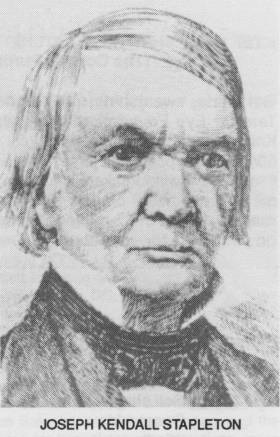
Joseph K. Stapleton was born in Philadelphia, Pennsylvania, in 1781. When he was nine years old his family moved to Baltimore, Maryland, where he learned the trade of brush making, which he followed during his business career.
He was Captain of the 39th Regiment and saw action at North Point on September 12, 1814. He died on April 1, 1853, and was buried in Greenmount Cemetery. The funeral was attended by members of the Grand Lodge, Grand Chapter and Grand Encampment. The services were conducted by Charles Gilman, Grand Master of the Grand Lodge.
Sir Knight Stapleton was raised in Concordia Lodge No. 13 at Baltimore, Maryland, and was the Worshipful Master in 1810. In 1815 he assisted in the organization of Phoenix Lodge No. 56 and was Worshipful Master of this Lodge. In 1835 he returned his membership to Concordia Lodge. He was active in the Grand Lodge but never occupied the higher official stations.
He was exalted in Concordia Chapter in 1810 and in 1816 became a charter member of Phoenix Chapter, over which he presided for many years. For twenty-five years he served as Grand High Priest of the Grand Chapter of Maryland and the District of Columbia. In 1829 he was elected General Grand Scribe of the General Grand Chapter and served three terms. In 1838 he was elected Deputy General Grand High Priest and served in that capacity until 1850.
He received the Orders of Knighthood in Maryland Encampment No. 1 at Baltimore some time prior to 1828, as he was elected Grand Master (Eminent Commander) in June, 1828, to serve out the unexpired term of Sir Knight Philip P. Eckel. In 1829 he was reelected to the same position.
In 1835 he attended the Triennial Conclave of the General Grand Encampment held in Washington as the representative of this Commandery. He was elected Deputy General Grand Master, which office he was to hold for fifteen years. During this period he was active in establishing many new Commanderies.
At the Conclave of 1850, the following resolution was adopted:
"Resolved, That in consideration of the long, able, and faithful services of Sir Joseph K. Stapleton, in the various offices which he has held in this General Grand Encampment, that a jewel of the Order be presented to him and that the General Grand Treasurer procure the same."
Grand Master Hubbard reported his death at the Conclave of 1853, stating:
He has kept the faith' as a valiant and magnanimous Knight, and has now left us and our earthly tabernacles."
TOP

John C. Smith was born in Philadelphia, Pennsylvania, on February 13, 1832, where he resided until he was twenty-two years of age. He served an apprenticeship as a carpenter and builder and in 1854 moved to the West, stopping for a time in Chicago and finally in Galena, Illinois, where he lived for many years and carried on his trade as a builder. He was married March, 1856, to Miss Charlotte A. Gallaher of Galena, Illinois, and four children blessed that marriage.
In 1859 he was appointed assistant superintendent of the Custom House and Post Office at Dubuque, Iowa, where he remained until the outbreak of the Civil War. He enlisted as a private in 1861 in the 74th Regiment, Illinois Volunteer Infantry. Later in that year he was commissioned by Governor Yates to recruit a company and was elected Captain, and later Major, of the regiment. He participated in various engagements during the War, and for conspicuous bravery at Chickamauga he was commissioned a Lieutenant Colonel. He was wounded in the Battle of Kenesaw Mountain, but recovered sufficiently to participate in the Battle of Nashville. In 1865 he was brevetted Colonel by President Lincoln, and later Brigadier General by President Johnson for his meritorious services.
After the war he returned to Galena and was appointed Assistant Assessor of Internal Revenue. In 1874 he moved to Chicago in the interest of the Penn Mutual Life Insurance Company. In 1875, he was appointed Chief Grain Inspector of the City of Chicago, and in 1878 he was elected State Treasurer, and in 1884 Lieutenant Governor. He died at his home in Chicago on December 31, 1910. Private funeral services were held at his home on January 2, 1911, after which the body was conveyed to Medinah Temple where the beautiful Templar services were held under the direction of St. Bernard Commandery No. 35. Following the Templar Services the body was taken to Galena, Illinois, where it was laid to rest by the brethren of Miners Lodge No. 273.
Sir Knight Smith was raised in Miners Lodge No. 273 at Galena, Illinois, on May 21, 1859. He served as Master of the Lodge for five years. He was Grand Master of the Grand Lodge of Illinois from 1887 to 1889.
He was exalted in Jo Daviess Chapter No. 51 at Galena, Illinois, on May 15, 1860, and was High Priest for seven years.
He was greeted a Royal and Select Master in Freeport Council No. 39. Later he was Thrice Illustrious Master of Ely S. Parker Council No. 16, which position he held for many years. He was Grand Treasurer of the Grand Council from 1889 to 1911.
In the Scottish Rite he received the 320 in Freeport Consistory in March 1873, and was created a Sovereign Grand Inspector General 330 of the Northern Jurisdiction on August 19, 1875, and crowned an active member on September 23, 1883. He served as Deputy for Illinois until 1900 when he was elected Grand Minister of State which office he held until his death.
He was Knighted in Freeport Commandery No. 7 on April 26, 1871, and was Eminent Commander of Galena Commandery No. 40 for many years. He was Grand Commander of the Grand Commandery of Illinois in 1880 and served on the Committee on Correspondence from 1889 to the time of his death.
Sir Knight Smith was appointed Representative of the Great Priory of England and Wales near the Grand Encampment of the United States, and in appreciation of his services in bringing about the Treaty of Amity there was conferred upon him the title Knight Commander of the Temple, and later the Grand Cross Knight of the Great Priory of England.
Sir Knight Smith travelled extensively and visited the Masonic brethren in many lands. He was probably one of the best known Masons in the world. He was a Masonic writer of great talent and his reports for the Committee on Correspondence were comprehensive and exhaustive. As a citizen he merited the great honors he received; as a Knight Templar he holds a place of singular distinction.
| |















